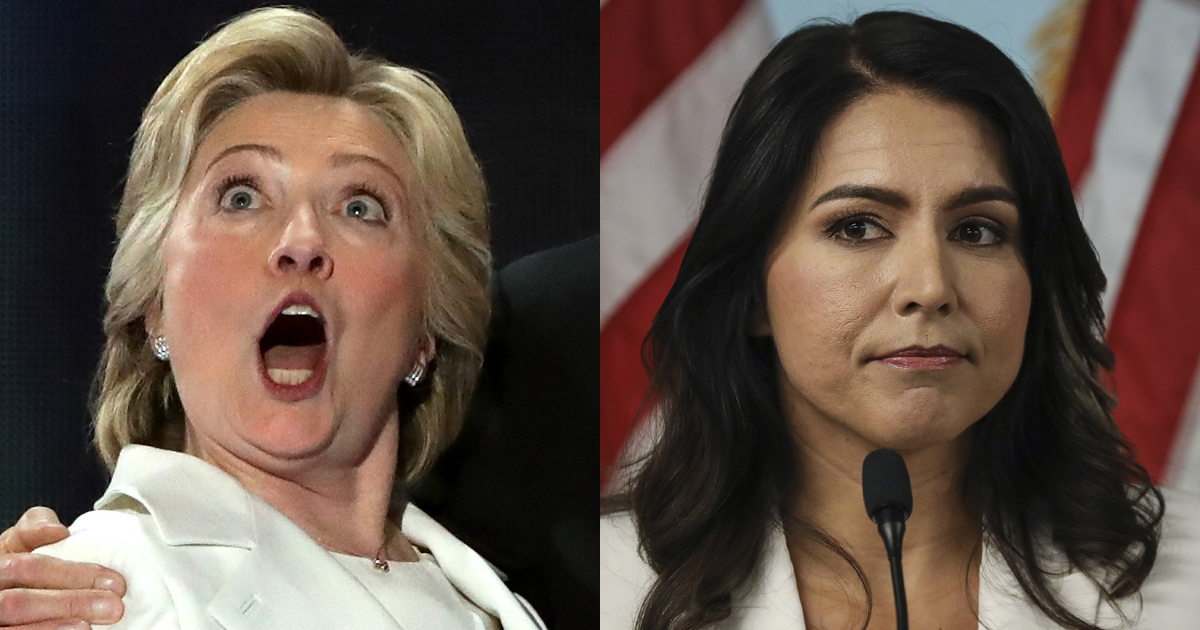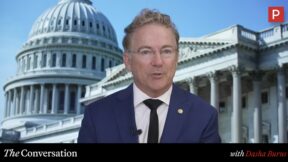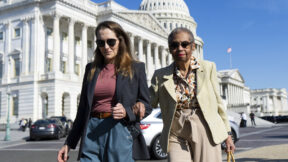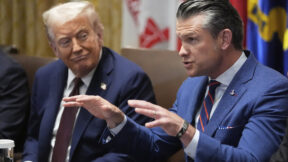NYT Fashion Critic Called All-White Look ‘Presidential’ When Hillary Wore It, Stuff of ‘Cult Leaders’ When Tulsi Gabbard Did

Alex Wong and Drew Angerer/Getty Images
Forget Labor Day, don’t wear white after this week’s Democratic debate!
New York Times fashion critic Vanessa Friedman was at one time a big fan of the white pantsuit. She praised the look as presidential and empowering and a “message for all women.” But then Tulsi Gabbard wore all white and Friedman has fashion-sensed it’s time for a new take.
You might not think that something like fashion could be so, well, black-and-white, but it really did come down to the politics of who is wearing the look for Friedman, as she herself explained at length in a column this week, one that caught the eye of social media and even Glenn Beck’s The Blaze.
When Hillary Clinton accepted the Democratic nomination in 2016, wearing all white, the fashion critic naturally wrote about the choice, pointing out Clinton had worn the look more than once during the primary and praising her for that.
“In her white suit, with her white crew neck underneath, Mrs. Clinton looked supremely unflappable: perfectly tailored and in control,” raved Frieman. “Not a hair out of place (but some hair nicely waved). The kind of person who could carry the nuclear codes with aplomb.”
It was not just about pulling off the look, however, but the history of it in its own right, as a symbol.
“That suit, quietly yet clearly, made reference to history, specifically the history of the women’s movement,” she wrote.
Things change, though. As a 2020 candidate for the nomination, Gabbard too has worn all white more than once, wrote Friedman, having worn the look when she filed her candidacy, at now three debates, and also being “pictured in white, looking soulfully into the future, on the home page of her official campaign website.”
“That kind of repetition, especially during events geared toward the public eye, does not happen by accident, said Friedman. “There’s a reason she is opting for the imagery; a calculation behind the choice.”
In Tulsi Gabbard’s case, though, Friedman didn’t find the repetition fitting or appropriate, nor evocative of empowering women, but instead, with saturation-level snarkcasm, likened it to “the mythical white knight riding in to save us.” Not to mention “the white of avenging angels and flaming swords, of somewhat combative righteousness (also cult leaders).”
“Her white suits are not the white suits of Ms. Clinton,” Friedman said of Gabbard. “It has connotations of the fringe, rather than the center.”
The criticism of Gabbard’s politics that led Friedman to this rejection of the white pantsuit and the image of hate and patriarchy was not left out of the article, though.
Part of the muted reaction probably has to do with the fact that Ms. Gabbard has engaged in a pretty public battle with Mrs. Clinton, calling her “queen of the warmongers” after Mrs. Clinton suggested Ms. Gabbard was the favorite Democratic candidate of the Russians.
But it most probably also has to do with the fact that Ms. Gabbard herself doesn’t seem particularly interested in connecting with the suffragists, but rather is using her white suits to tap into another tradition, latent in the public memory: the mythical white knight, riding in to save us all from yet another “regime change war.”
That’s the reason. All white is evocative of every bad thing when Gabbard wears it because Gabbard criticized Clinton. That’s it.
Friedman said that this “is a reminder that clothes, especially when it comes to the optics of politics during an era of the ubiquitous screenshot, are only as meaningful as the content that fills them.”
That’s true of fashion columns, too.




